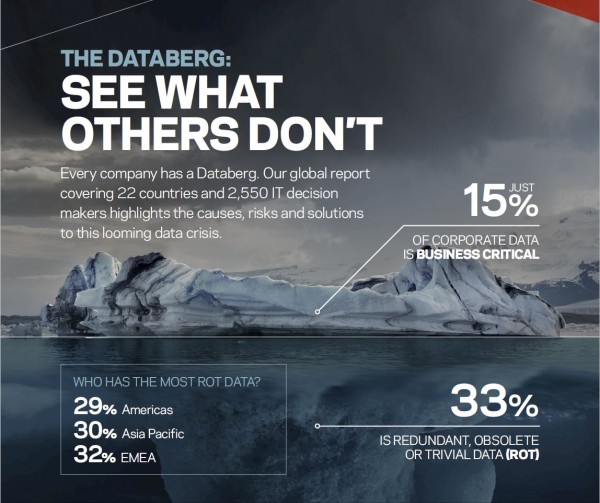
In an age where storage seems free to users, having too much useless data may ironically cost organisations trillions of dollars to manage in a few years’ time.
By 2020, they would have to pay an estimated S$4.6 trillion dollars to handle that data, most of which is useless or “dark” data, according to a report put out yesterday by enterprise storage vendor Veritas.
Surveying 2,550 IT professionals in 22 countries, it found that as much as 33 per cent of data on enterprises can be considered redundant, obsolete or trivial.
Another 52 per cent of this data is “dark”. In other words, no one knows how important it is to the business or sometimes even the fact that it exists on the network.
Only 15 per cent of all data stored by these respondents was considered important to the business. This is the information they need for the company to function.
The problem seems even more acute in Singapore, where only 9 per cent of all data is tagged as being important to the business. This is the third lowest among the countries surveyed.
One reason is employees dumping their personal data – cat videos or even legal documents – on their corporate servers. Indeed, Singapore is ranked the lowest in terms of being disciplined in following corporate policy.
With users getting free gigabytes of storage from public services such as Microsoft OneDrive or Google Drive, employees often blur the lines between personal and company resources.
There’s also the spectre of shadow IT, where cloud storage services that can be easily tapped on by users are forgotten after, say, a project is completed. When an enterprise has no policy on deleting unused or useless data, it accumulates.
Known as a company providing backup software, Veritas has been marketing its data management offerings to customers of late, in a bid to help them find the important data and erase the useless stuff.
This not only cuts maintenance and usage costs but also reduces the chances of the data being leaked or exploited for cyber attacks. Plus, information becomes easier to find, without having users look for a needle in a haystack.






